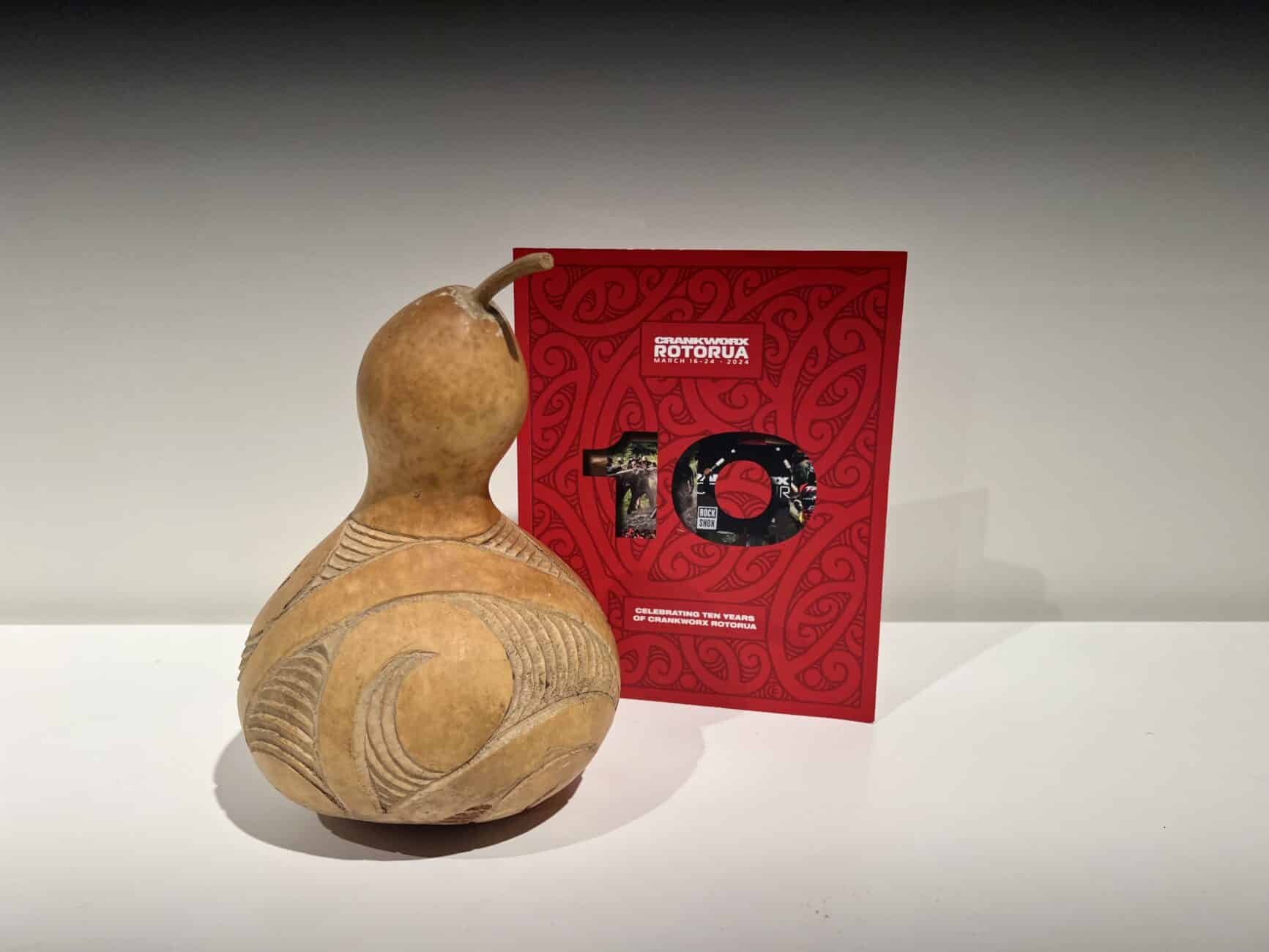Artwork: Clive Fugill
The cover of the 10th Anniversary Crankworx Event Guide has been designed by New Zealand Māori Arts & Crafts Institute (NZMACI) Tohunga Whakairo Rākau (Master Carver) Clive Fugill. He has been made a companion of the New Zealand Order of Merit for services to Māori Art in the 2024 New Years Honours.
His inspiration for the cover artwork came from the Crankworx Rotorua Festival location – Mount Ngongotahā. Early Te Arawa explorer Ihenga named the maunga (mountain) Ngongotahā – ngongo meaning to drink, and tahā meaning calabash. If you look closely at the cover, you should be able to see the shape of a tahā emerging.
The pattern is based on the mangōpare (hammerhead shark) design series, with running koiri design. In the story below of Ihenga – you’ll see how all these elements weave through.
Interestingly, the tahā (calabash) is carved while it is still on the tree, so it is easier to work with before it hardens.
Clive has a tahā at home which he has carved himself – it is a direct descendant of one of the six tahā which Hinemoa fastened to her body for flotation, to swim to Tūtānekai on Mokoia Island.
The story behind the name Mt Ngongotahā: Ihenga and the Patupaiarehe:
The cover design is inspired by the story of Ihenga. He explored and named many towns and natural features throughout the North Island. He was the grandson of Tama-te-kapua who was the captain of the Te Arawa waka (canoe).
An early Arawa explorer of the Rotorua region, Ihenga, had many encounters with the Patupaiarehe. They were thought to be an iwi atua or people of supernatural powers. To some they were known as the ‘fairy people’ who lived at Mount Ngongotahā.
One day Ihenga saw a curl of smoke rising near the summit of the great maunga (mountain) far above him. Some people say the smoke he saw was fairy mist. This made Ihenga very curious about who was living so high on the maunga, so he climbed his way through the thick fern of the lower slopes and into the forest. He kept climbing until he stumbled onto an amazing sight: the home of the Patupaiarehe.
The tough climb made him very thirsty, so he asked for some water and a beautiful young woman gave him a drink out of a tahā (calabash). The Patupaiarehe were very interested in Ihenga and pressed around him, touching his skin and asking questions. Ihenga became worried by their interest, so he broke away from them and fled down the maunga as quickly as he could.
The people chased him, but he was faster than all of them, except for the beautiful young woman who had given him the drink of water. She wished to catch him and make him her husband. He only escaped the Patupaiarehe by smearing some of the kōkōwai (red ochre mixed with shark oil) he kept in the small pūtea (bag) he carried, onto his skin. The smell of the shark oil meant the young woman stopped chasing Ihenga and he was able to run all the way back to the shores of the lake where his wife was patiently waiting for him.
Therefore, Ihenga named the maunga Ngongotahā – ngongo meaning to drink, and tahā meaning calabash.
Source of Ihenga and the Patupaiarehe story: Te Arawa Stories Digital Storehouse www.gtas.nz
